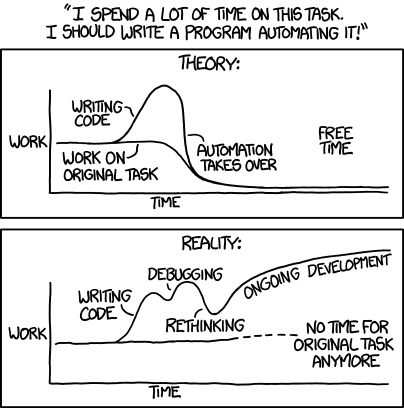Why this billion dollar FAIL should silence the AI zealots
While Tesla continues to trudge through ‘production hell’ to deliver their promise of a mass-market electric car, Elon Musk has finally declared that robots aren’t always the answer to marching beyond the licking flames of Beelzebub. And in a recent tweet Musk further conceded that humans are in fact an underrated alternative to reaching the pinprick of sunlight Tesla is chasing. Who knew?
It seems that Tesla – a company that inherits much of its DNA from the IT world - is repeating the mistakes car companies made in the 1980s when they too believed they could automate the bejesus out of everything.
Back in a time of big shoulder pads and even bigger hair, General Motors – a company that faced decimation from its Far Eastern rivals – designed a human-free automated assembly line that could operate in darkness. They foresaw components entering one end of GM’s humungous production plant and shiny new cars driving out at the other; without the inconveniences of employing people.
Despite throwing buckets of money at the dream (literally billions of dollars), the end product turned out to look more like a child’s crayon drawing of a car. Robots regularly broke down and delayed production; robotic arms swung violently into each other, paint shops ended up with more paint on the machines than the cars. I like to imagine the shambles inspired the scene in Santa Claus The Movie when Dudley Moore’s character tries to automate the elves’ toy production line.
It’s easy to mock the failings of GM and imagine arrogant fat cats out of touch with the real world, but they weren’t the only ones blinded by the dream.
While robotics has progressed in those 40 years, the sheer difficulty of automating complex assembly lines and myriad supply chains remains as tricky today. The lesson GM taught competitors is that successful automation has to be introduced iteratively and alongside people who have thoroughly ironed out specific processes.

In shaping the vision for his factory, Musk wanted to make ‘a machine that makes the machines’, but now realises he went too far, too fast. It turns out that the agility afforded to Silicon Valley hipsters cutting code doesn’t necessarily translate into the rigid disciplines needed to organise mass production assembly lines.
I think we can all learn from this, especially those who espouse the wonders of artificial intelligence and machine learning. Current thinking suggests that, as a rule of thumb, AI can handle the kind of tasks it would take a human about a second to figure out. There are exceptions, but it’s a humbling reminder to the wild-eyed exponents of AI that we’re still witnessing the technology’s early days. Put another way, process automation is hard, and machines are nowhere near smart enough yet to figure out most fuzzy business processes; beware the theatre of Google DeepMind and its mastery of games such as chess or Go, with clearly defined rules.
At Crimson’s recent Innovation Conference, the note that rang loud was that most companies are still stuck with legacy technology that can’t respond fast enough to changes in customer behaviour. Unlike dotcom businesses that built their foundations on digital most ‘analogue’ businesses with processes that have grown organically have a patchwork quilt of systems and spreadsheets that don’t speak to one another. Data – the oil necessary to lubricate the wheels of machine learning - is buried deep in wells hidden all over the organisation. It would seem that the reality on the ground is far messier than Big Tech’s sizzling AI slide decks care to face.
So while it’s exciting to consider the potential of AI, there’s a big job ahead to get our systems in order. The promised land or dystopian future – depending on your appetite for optimism – will have to wait a while longer.
Crimson takes an agile and iterative approach to breaking the elephant down. It’s an approach that gives our clients the confidence to move forward without worrying that they’re putting all chips on black. While we specialise in helping to digitise the customer journey by upcycling Microsoft technologies such as Dynamics 365, the flipside is we help unpick the legacy IT hairball so that data can begin flowing around the business and greasing the machine.
Too many people claim to be waving the AI flag at the top of Everest. But I liken Crimson to the hardy Sherpas at base camp, ready to help our clients prepare for the journey, without showmanship or pretence, but through straightforward pragmatism.
Crimson’s team have many starting routes your organisation can follow. Two free workshops worthy of your consideration are Microsoft Art of The Possible and the Data Insights Pathfinder. Each includes powerful, prioritised action plans and food for thought from some of the industry’s leading minds. Alternatively, you can call me on 01675 466 477 and I will arrange a chat with one of our experts who can discuss several appropriate alternatives.
As Alex Turner, lead singer of Arctic Monkeys once announced on their debut TV appearance, ‘Don’t believe the hype’.


